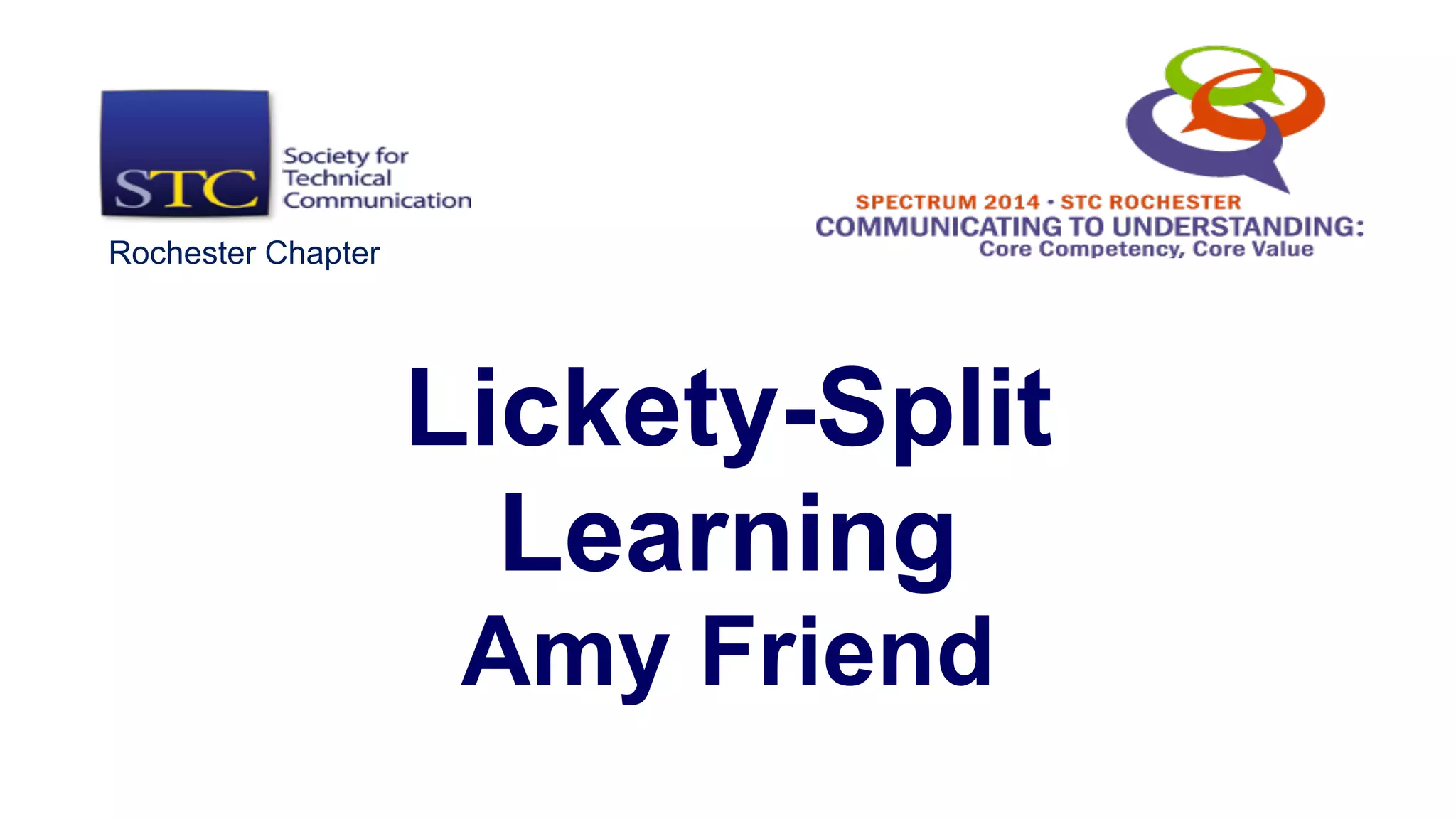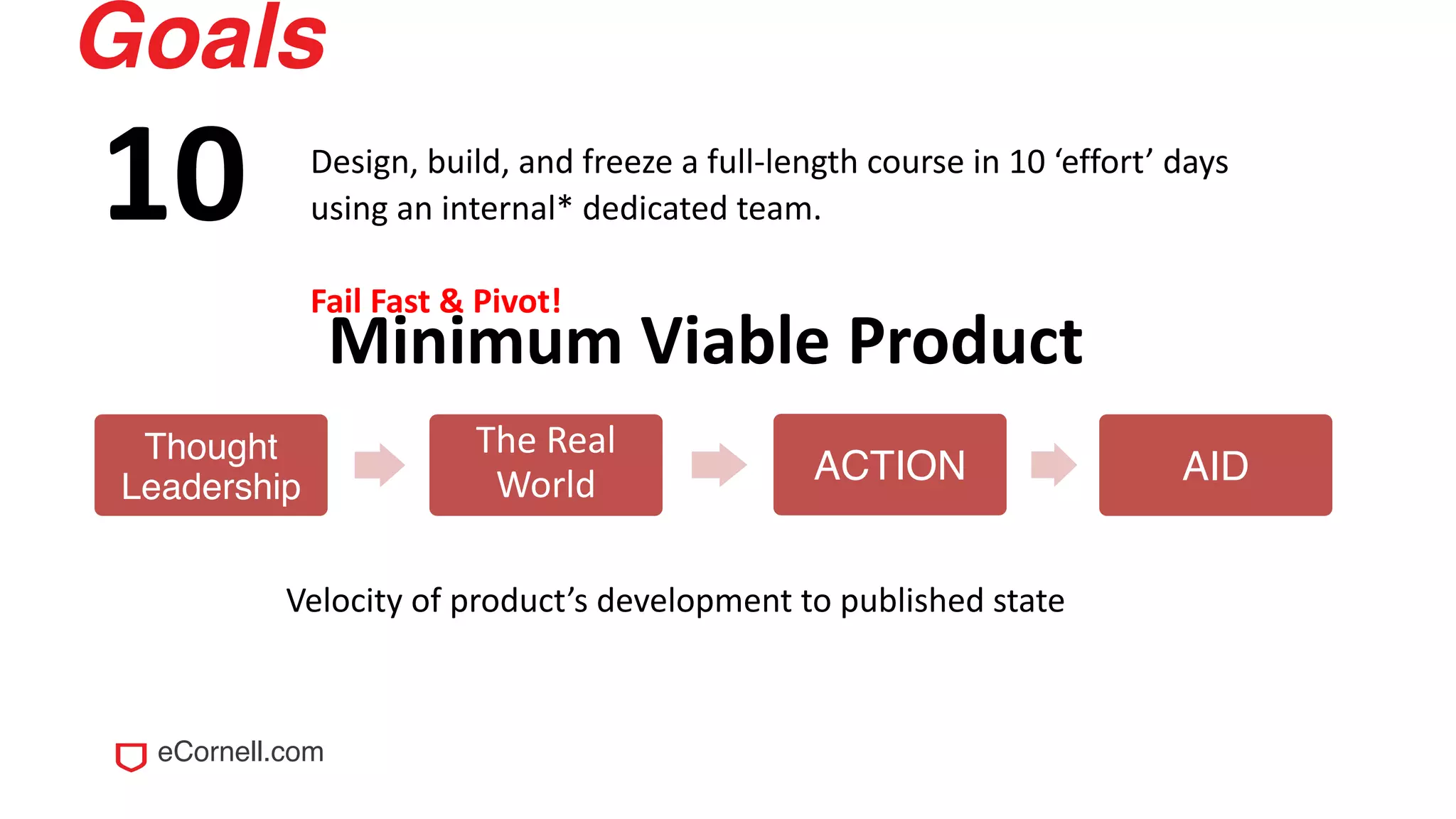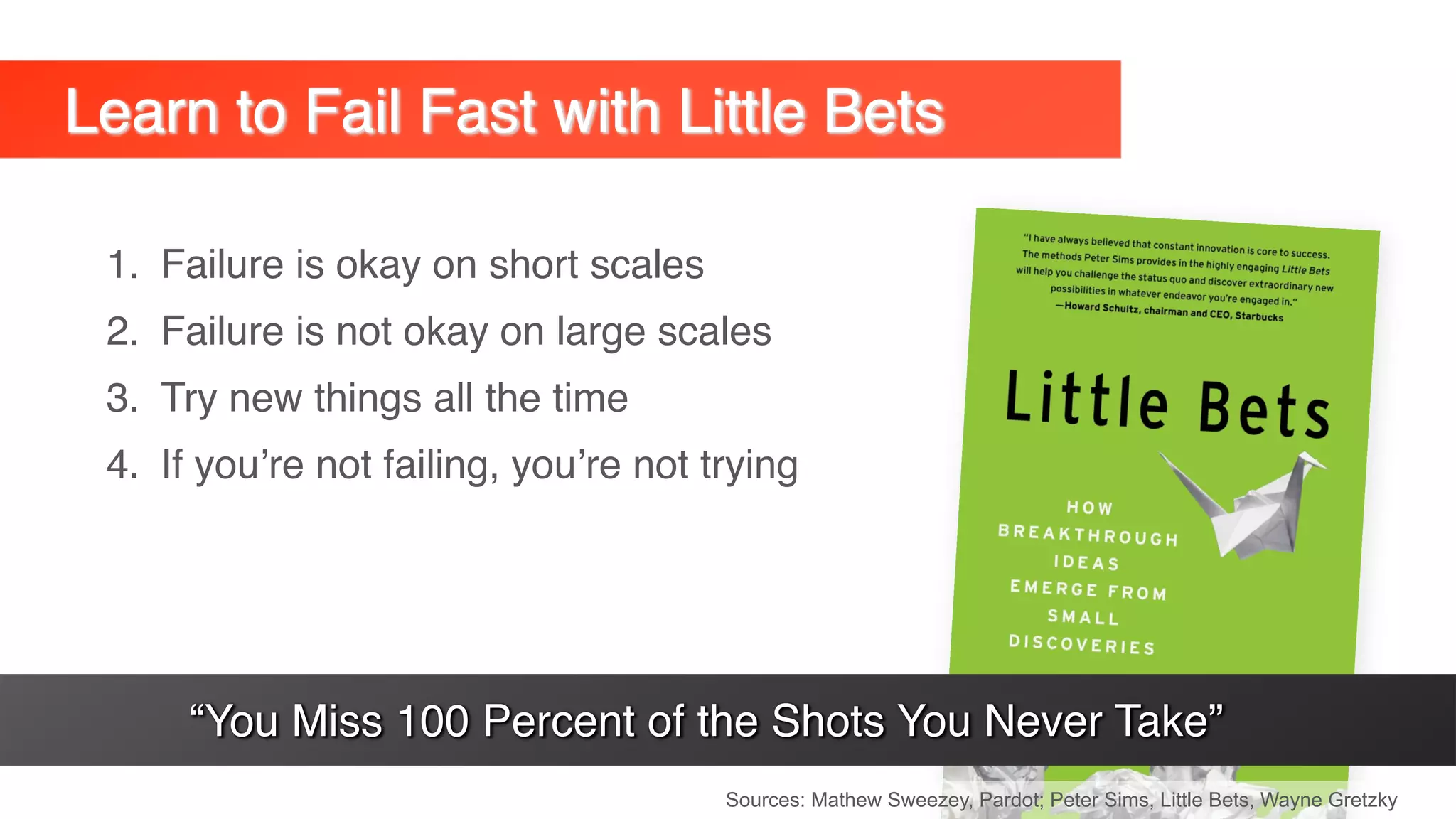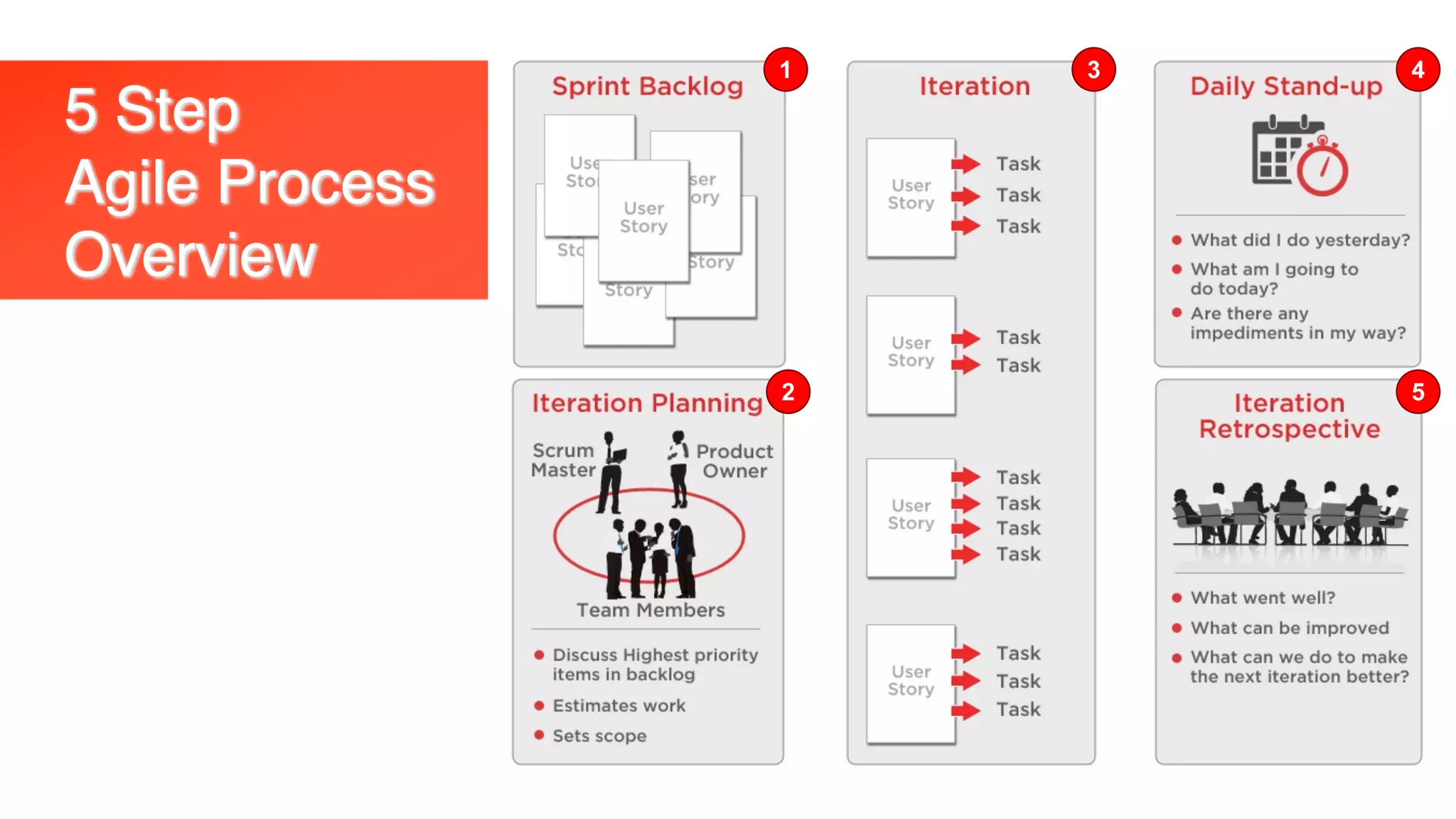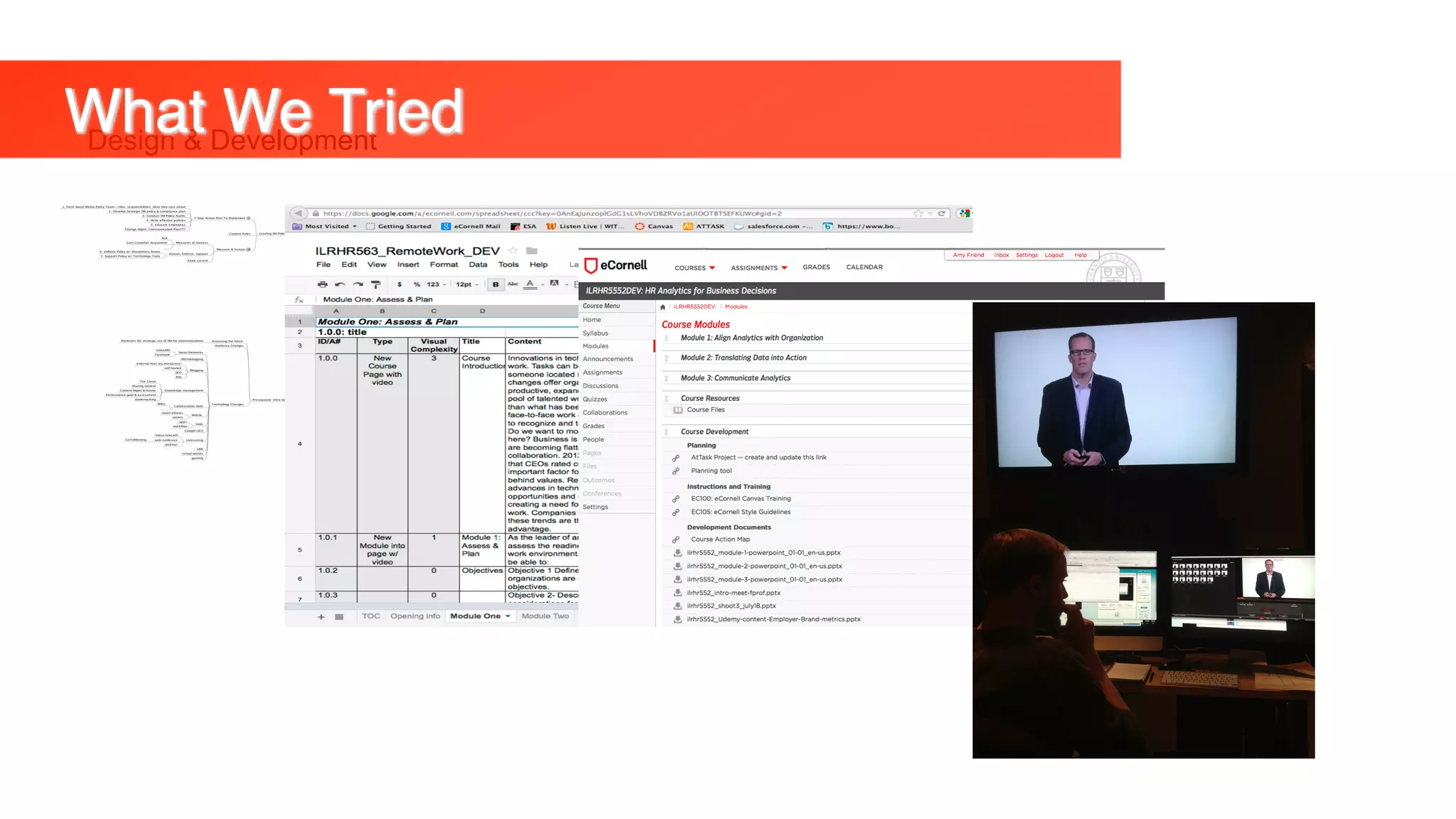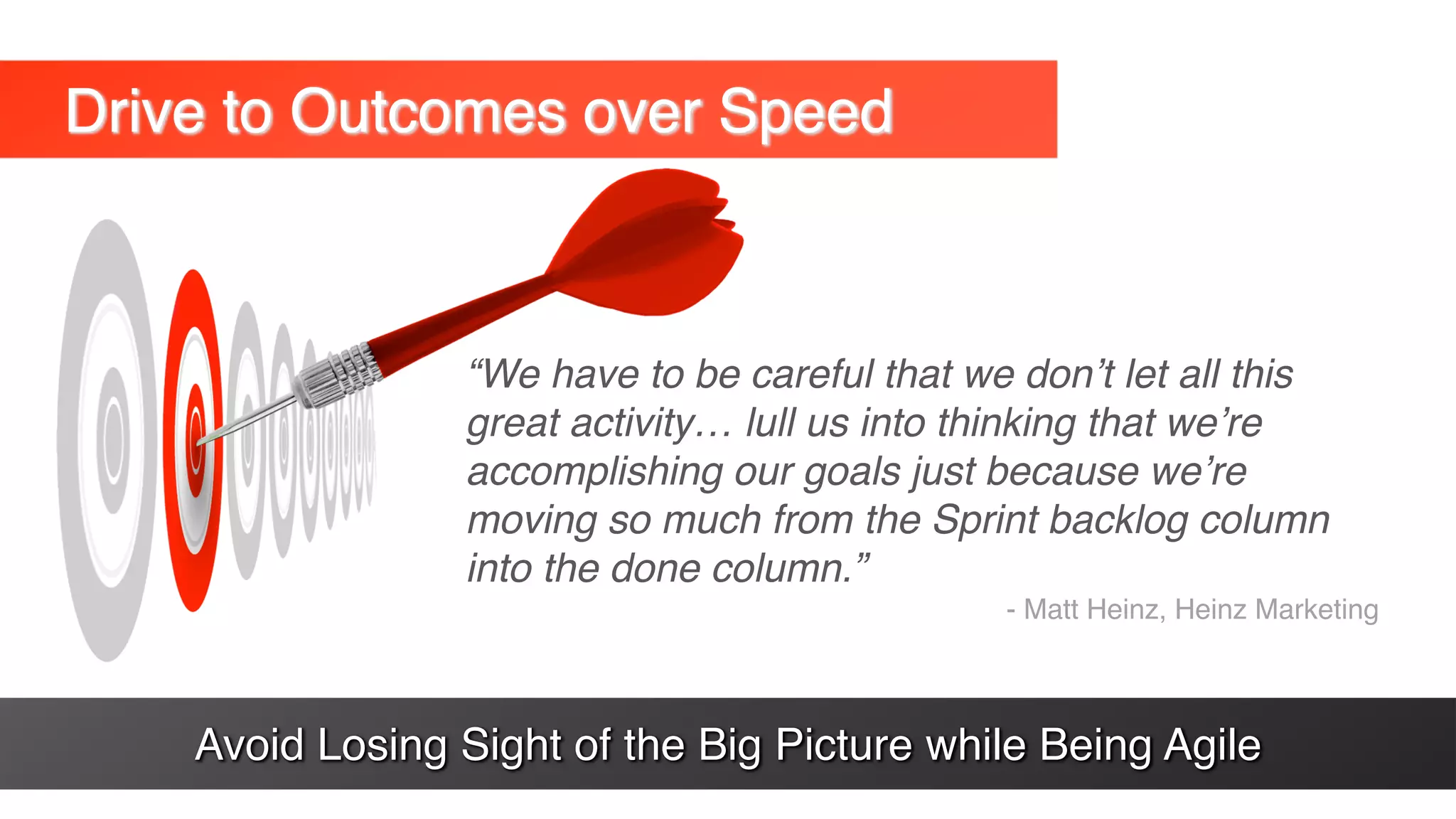The document outlines a strategy for designing and developing an online course in a rapid, agile manner, emphasizing the importance of quick iterations and small experiments. It highlights the need for cultural change within organizations to embrace agile development, addressing common challenges such as resistance to change and management support. Key takeaways for successful agile implementation include driving adoption, addressing obstacles, and empowering teams to focus on outcomes.
